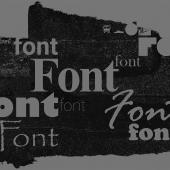Banner artwork by 2246679891 / Shutterstock.com
Cheat Sheet
- Be careful when using pre-existing templates for contracts. Copying exact wording of a contract written by someone else can be considered plagiarism and an infringement of intellectual property laws.
- Train lawyers. Develop policies about using pre-existing templates or other contracts in writing new contracts and make sure in-house counsel understand the risks of copied language.
- Risk manage. Stay on top of copyright law and regularly review current contract templates to assure there are no risks of violations.
- Start anew. Encourage the creation of original legal documents.
In the legal profession, the significance of intellectual property (IP) extends beyond the protection of innovative products or ideas — thorough IP permeates the fabric of the legal practice. This is particularly true in the corporate world, where in-house counsel are often at the forefront of navigating complex IP issues from the drafting and reuse of contractual provisions between agreements, to the ethical incorporation of existing legal content into legal filings.
The January 2024 lawsuit involving Winston & Strawn, a prominent law firm, serves as a stark reminder of the IP ethical considerations that in-house lawyers must grapple with. The case, brought by the Hsuanyeh Law Group (HLG), a boutique law firm, alleges that Winston & Strawn copied a legal motion “nearly verbatim,” raising questions about the ethical and legal boundaries in creating and using another’s legal arguments and content. Such allegations are not just a concern for law firms but resonate deeply within corporate legal departments, where adopting and adapting existing contracts and clauses is commonplace and seen as efficient advocacy.
For in-house counsel, the implications of this case are multifaceted. It highlights the need for a careful and considered approach to the use of existing legal materials. The act of copying or closely mirroring legal documents, a practice often seen as a time-saving measure, may lead to significant ethical and legal ramifications. The case, therefore, acts as a catalyst for a broader discussion of the role of IP in legal practice, especially in the corporate sphere, where the lines between precedence and infringement can often blur.
The Winston & Strawn case underscores the importance of understanding the nuances of IP law and its application to everyday legal functions. This case should remind in-house lawyers of the critical need to balance efficiency with ethical and legal compliance in drafting and reusing legal documents like contracts.
And there are additional considerations, such as: Can a contract template be protected by copyright law? If so, who is the copyright owner? What about templates that are publicly available on the internet?
As we explore the case and its broader implications, we aim to equip in-house counsel with the insights needed to navigate these complex waters, ensuring their practices are both efficient and ethically and legally sound.
The act of copying or closely mirroring legal documents, a practice often seen as a time-saving measure, may lead to significant ethical and legal ramifications.
The allegations against Winston & Strawn
The controversy began in August 2023 when HLG filed a US Rule 12 motion to dismiss patent infringement claims against its client. The following day, Winston & Strawn, representing a co-defendant in the same consolidated case, filed a similar Rule 12 motion. After noticing the similarities, HLG registered its motion with the US Copyright Office. In late December 2023, HLG filed a complaint against Winston & Strawn, alleging copyright infringement in the Southern District of New York. HLG alleged that Winston & Strawn's motion was similar in legal argument but a near-verbatim copy of their own motion, raising serious questions about copyright infringement and ethical practices in legal drafting and attribution.
While copying clauses or contract templates can be considered standard practice in corporate legal departments to avoid reinventing the wheel, the Winston & Strawn case underscores the potential risks of this method. Although the Winston & Strawn case settled before any judicial findings, the case brings to the fore the thin line between efficient advocacy and outright copyright infringement. The case also serves as a cautionary tale, illustrating that copying legal content, even if widely practiced, must be approached with a thorough understanding of intellectual property laws and ethical considerations. It also emphasizes the need for a careful balance between using existing legal resources as a reference and ensuring the creation of original, compliant, and ethically sound legal documents.
Legal context and precedents
Understanding the legal context and precedents of copyright in legal documents is crucial for in-house counsel. These precedents outline the boundaries of legal ethics and serve as guiding principles for creating and using legal content from another’s work.
One seminal case that highlights these boundaries is Iowa S. Ct. Atty. Disc. Bd. v. Cannon. In Cannon, the Iowa Supreme Court found that extensive, nearly verbatim copying of even parts of legal documents without proper attribution is a misrepresentation and a violation of ethical standards. This case emphasizes the importance of originality in legal drafting and the ethical responsibility to provide proper credit for sourced material.
Another suit that offers insight into the interpretation of copyright in legal documents is White v. W. Pub. Corp. In this case, attorneys filed a lawsuit claiming that their copyrights were infringed upon when their briefs were included in legal research databases by West and LexisNexis. The court, however, ruled this inclusion was fair use under the US Copyright Act, as it did not economically substitute the original use of the briefs. This ruling indicates that while some use of existing legal materials can be permissible, the context and manner of their use are critical in determining whether such use falls within the bounds of fair use.
This ruling indicates that while some use of existing legal materials can be permissible, the context and manner of their use are critical in determining whether such use falls within the bounds of fair use.
In Newegg Inc. v. Ezra Sutton, P.A., the parties were co-appellees in a patent infringement case. The defendant allegedly lifted large portions of Newegg’s draft opening brief, circulated to the defendant before filing for review purposes. Judge Terry Hatter of the Central District of California held that the defendant had not established a prima facie case of fair use when the defendant merely made “minor and cosmetic” changes to another’s draft opening appellate brief and the allegedly copied brief had the same “intrinsic use” — namely, to persuade the Federal Circuit.
These legal precedents highlight the importance of adherence to copyright laws in legal drafting. Understanding and applying these precedents is key to maintaining the integrity of legal practice within corporate environments.
Intellectual property challenges for in-house counsel
In-house counsel and legal professionals face a unique set of intellectual property challenges, particularly when it comes to drafting and negotiating contracts and clauses which, like above, stem from the need to balance the efficient use of existing legal materials with the creation of original content, all while ensuring compliance with copyright laws.
Navigating the use of pre-existing contracts and clauses
One of the primary tasks of in-house lawyers involves drafting contracts. Often, this process includes referring to pre-existing contracts and standard clauses. Counsel can find these pre-existing templates in their company’s own contract database, on the internet via template libraries like Law Insider or LexisNexis, or through professional organizations such as the Association of Corporate Counsel or Contract Nerds. Searching and identifying a relevant pre-existing template is just the first step. Diligent counsel may then borrow bits and pieces from these pre-existing templates to build a customized contract template relevant to the deal. Sometimes this involves copying/pasting entire clauses, other times, it involves using the document merely as a reference for inspiration or to confirm they are on the right track. While these pre-existing templates are invaluable for ensuring consistency and legal soundness, over-reliance on them without sufficient modification or attribution can run afoul of professional responsibility rules (including a lawyer’s ethical obligation to use independent professional judgment and be competent in his or her practice) and even lead to IP issues.
While these pre-existing templates are invaluable for ensuring consistency and legal soundness, over-reliance on them without sufficient modification or attribution can run afoul of professional responsibility rules (including a lawyer's ethical obligation to use independent professional judgment and be competent in his or her practice) and even lead to IP issues.
Ensuring compliance with copyright laws
In-house counsel should have a robust understanding of what constitutes fair use and where the line is drawn between acceptable borrowing and copyright infringement. This includes knowing when and how to cite sources properly and understanding the legal implications of copying and modifying legal texts. Competent drafting would involve more than just a simple copying/pasting exercise. Because deals are rarely identical, contracts should be carefully tailored to the particulars at issue. Sure, there are standard elements and clauses that every software-as-a-service agreement should include, for example, such as a definition of the services, term and termination clauses, and a description of the service level agreements. But the specific drafting language can and should vary from deal to deal. The legal expertise lies in deciphering those differences and crafting customized language to reflect the unique terms of the deal at hand.

Training and policy development
To address these challenges, corporate legal departments should invest in training their lawyers on IP issues related to legal drafting. Developing clear policies and guidelines on using precedent materials and creating original content can help mitigate risks associated with unintentional copyright infringement. In-house counsel should be trained to leverage pre-existing templates and their expertise to streamline the contract drafting process in a way that does not infringe IP rights. In addition, be sure to read through the terms and conditions of websites that provide contract templates for download on the internet. Do they claim to own the IP to the template? Do they grant you a license to use and edit the template? Do they agree to indemnify you if you get sued by a third party for copyright infringement?
Risk management in legal documentation
In-house counsel must also play a proactive role in risk management. This involves regular reviews of legal documents to ensure they comply with IP laws and do not expose the company to potential legal disputes. It also means staying abreast of the latest developments in copyright law to adapt practices accordingly.
Practical insights for in-house lawyers
In the wake of the Winston & Strawn case, in-house lawyers need to remember the paramount importance of intellectual property ethics in their daily practice. Here are some practical insights and best practices for in-house counsel to effectively handle IP issues, particularly in the realms of contract drafting and clause selection.
Develop a framework for ethical adaptation
In-house lawyers should establish a framework for using existing legal materials that clearly defines ethical adaptation. This includes understanding when and how to use standard clauses and when it is necessary to draft original content. The framework should also outline proper citation practices, giving credit where it is due if required. While attribution to publicly available legal sources and databases may be unnecessary (for example, if the source grants you a license for reuse), slavish reproduction of another’s original work product without proper attribution may implicate ethical and legal issues, as reflected by the Winston & Strawn case.
Enhance understanding of copyright laws: Continuous education on copyright laws and their application to legal documents is crucial. In-house counsel should stay informed about the latest developments in copyright law, including the fair use doctrine, to ensure their practices are compliant and up-to-date.
Implement rigorous review processes: Establish a review process for all legal documents to ensure they adhere to IP ethics. This process can involve checks for originality, proper citation, and compliance with relevant copyright laws. Regular audits of legal content can also help identify and rectify any potential IP infringements.
Encourage original legal content development: Foster a culture that values and encourages the creation of original legal content. This can be achieved by providing resources and training for lawyers to enhance their drafting skills and encouraging creativity and innovation in legal documentation.
Use technology to aid compliance: Utilize legal technology tools to ensure compliance with IP laws. Tools like plagiarism checkers and legal drafting software can assist in-house counsel in creating original content and avoiding unintentional copyright infringements.
Collaborate with external experts: When in doubt, seek advice from external IP experts or legal counsel specializing in copyright law. Their expertise can provide valuable insights and guidance on complex IP matters.
Document policies and practices: Clearly document all policies and practices related to using legal materials and creating legal content. This will serve as a reference for the legal team and demonstrate a commitment to upholding IP ethics.
By adopting these practices, in-house lawyers can confidently navigate the complex landscape of IP in legal practice. These insights emphasize the importance of balancing efficiency with ethical responsibility, ensuring that the legal work meets business needs and aligns with the highest standards of legal ethics and compliance.
In-house lawyers should establish a framework for using existing legal materials that clearly defines ethical adaptation.
The Winston & Strawn case serves as a pivotal reminder of the complexities and importance of intellectual property ethics in the legal profession, particularly for in-house counsel. It serves as a valuable case study for in-house lawyers, highlighting the need for vigilance, ongoing education, and a commitment to ethical legal practice. By internalizing these lessons and implementing best practices, in-house counsel can ensure they effectively navigate the complexities of IP law, safeguarding their organizations and upholding the standards of the legal profession.
Disclaimer: The information in any resource in this website should not be construed as legal advice or as a legal opinion on specific facts, and should not be considered representing the views of its authors, its sponsors, and/or ACC. These resources are not intended as a definitive statement on the subject addressed. Rather, they are intended to serve as a tool providing practical guidance and references for the busy in-house practitioner and other readers.






